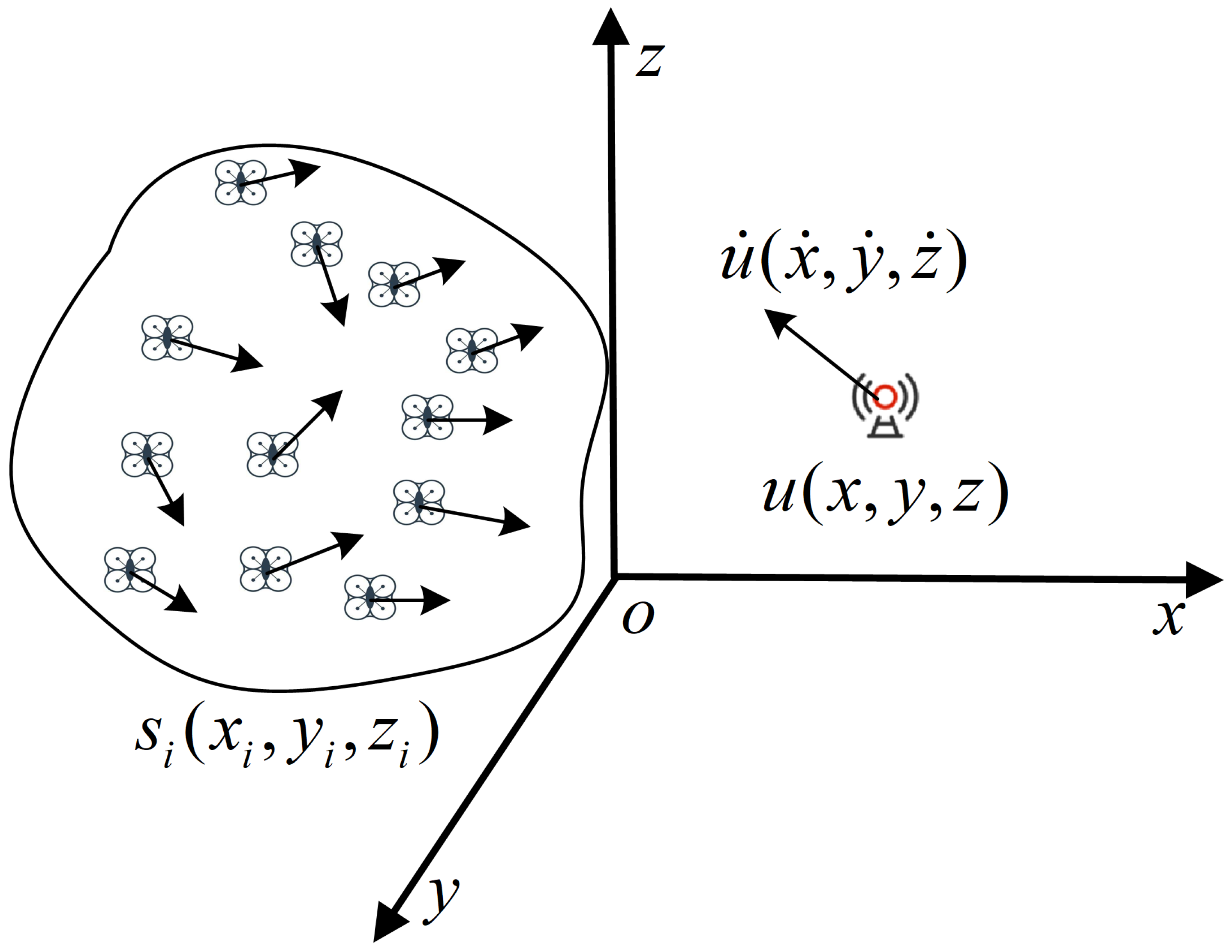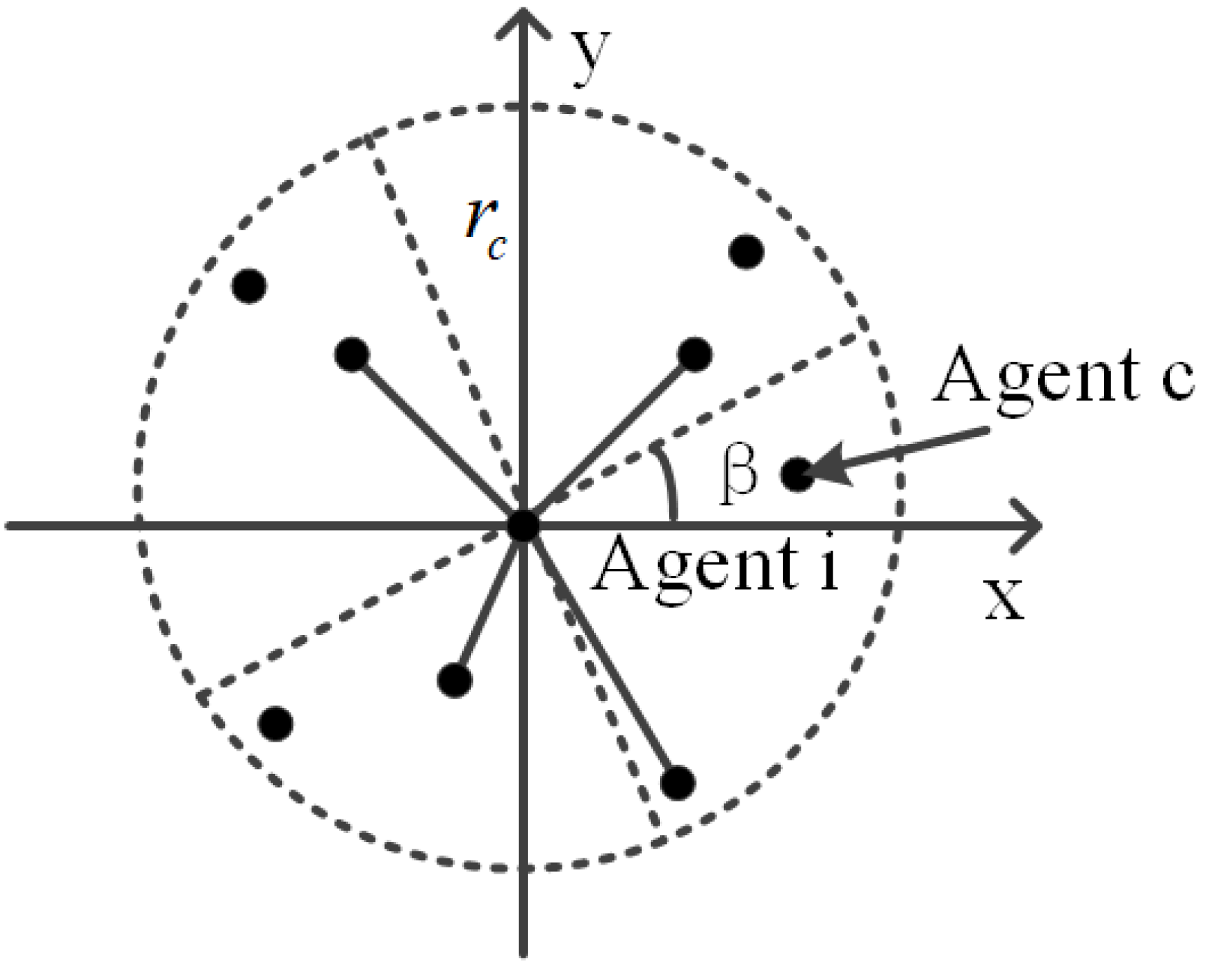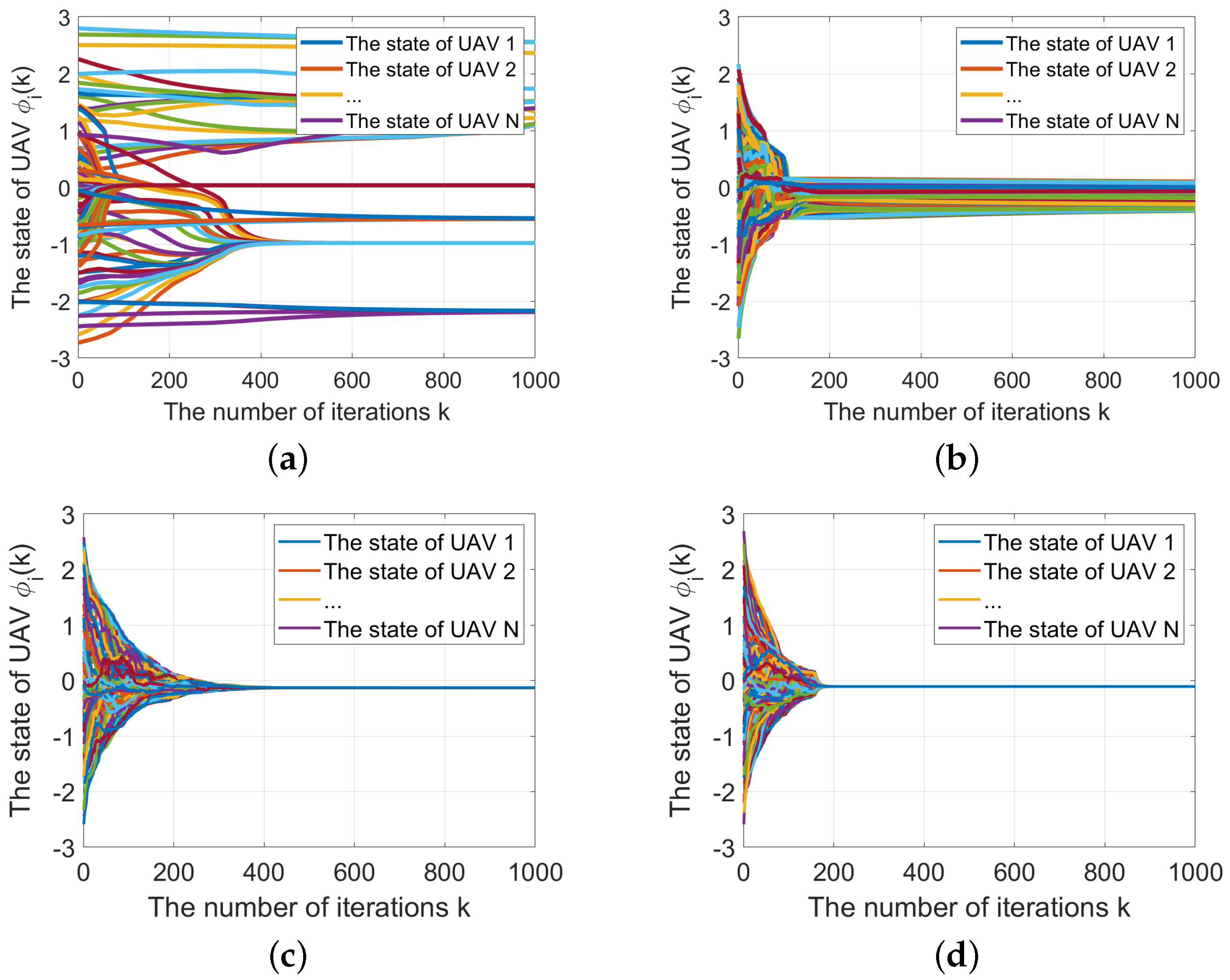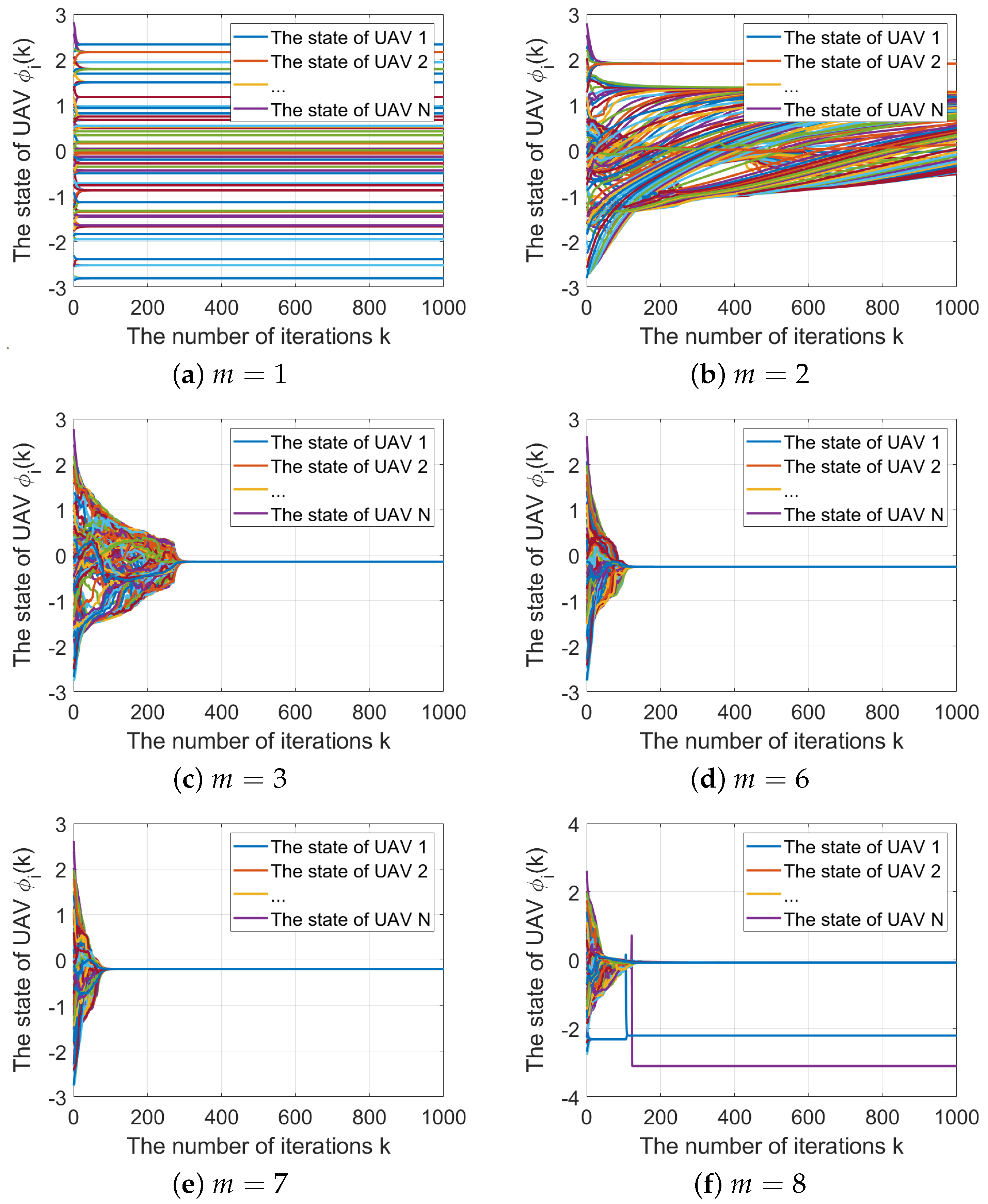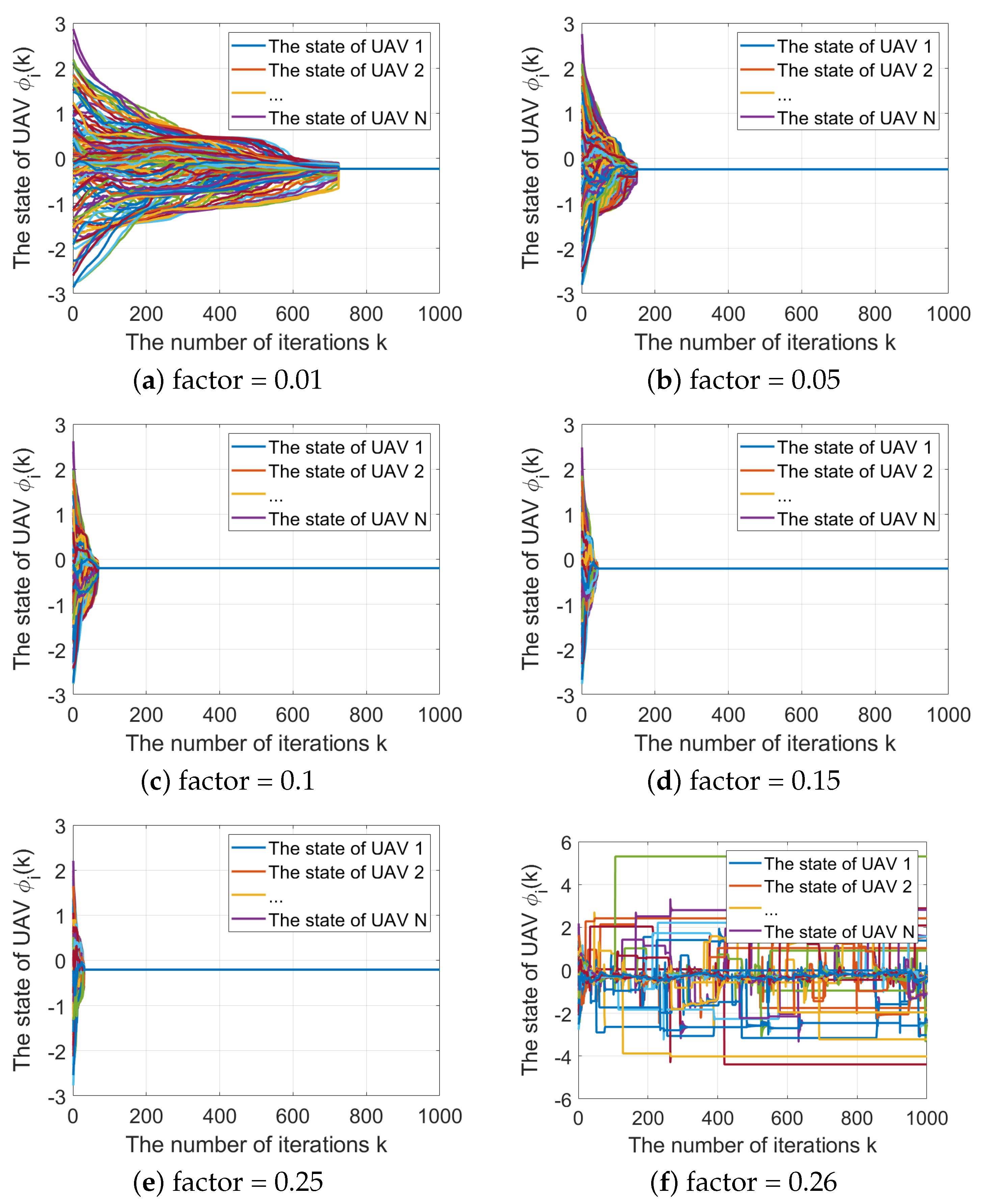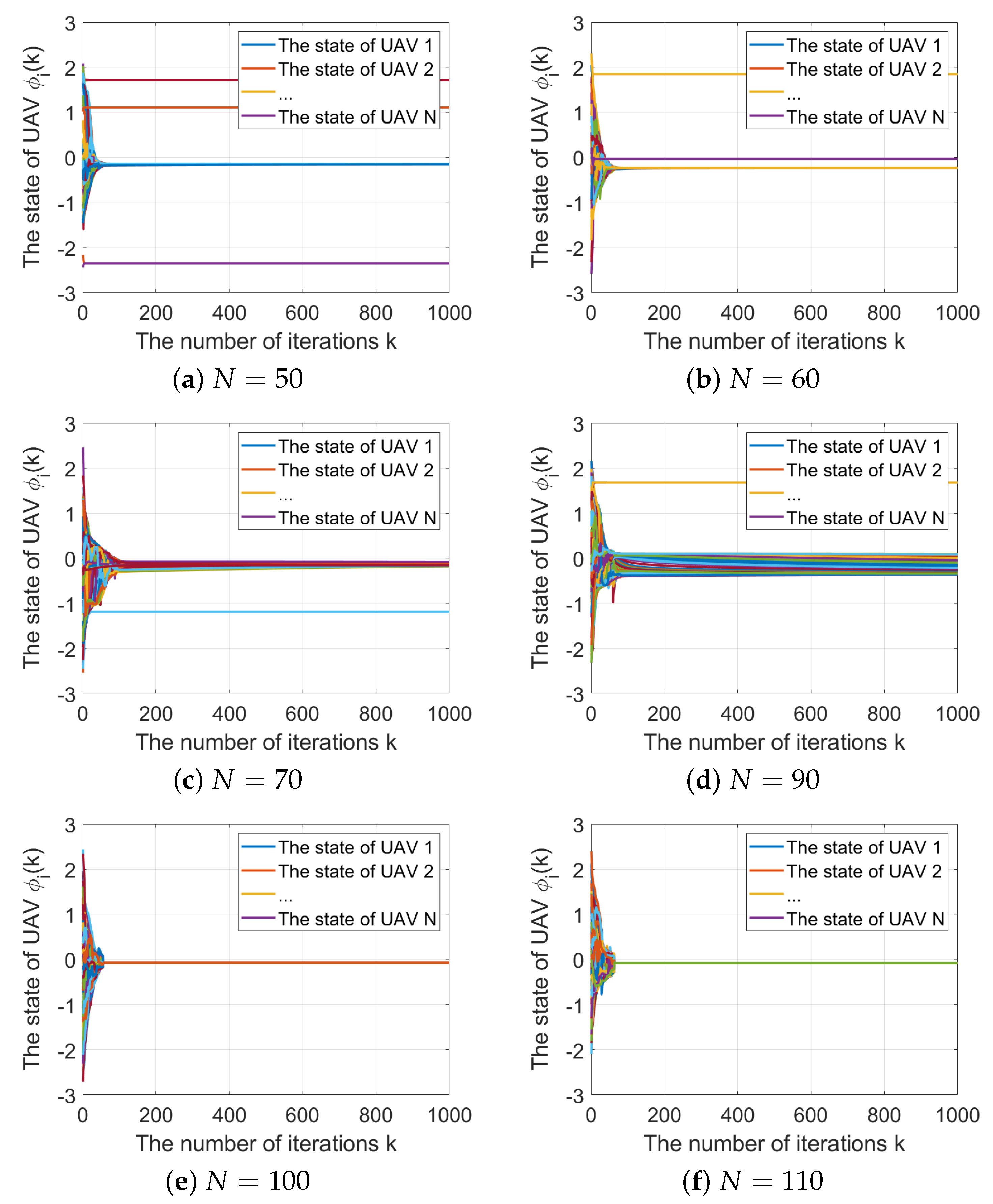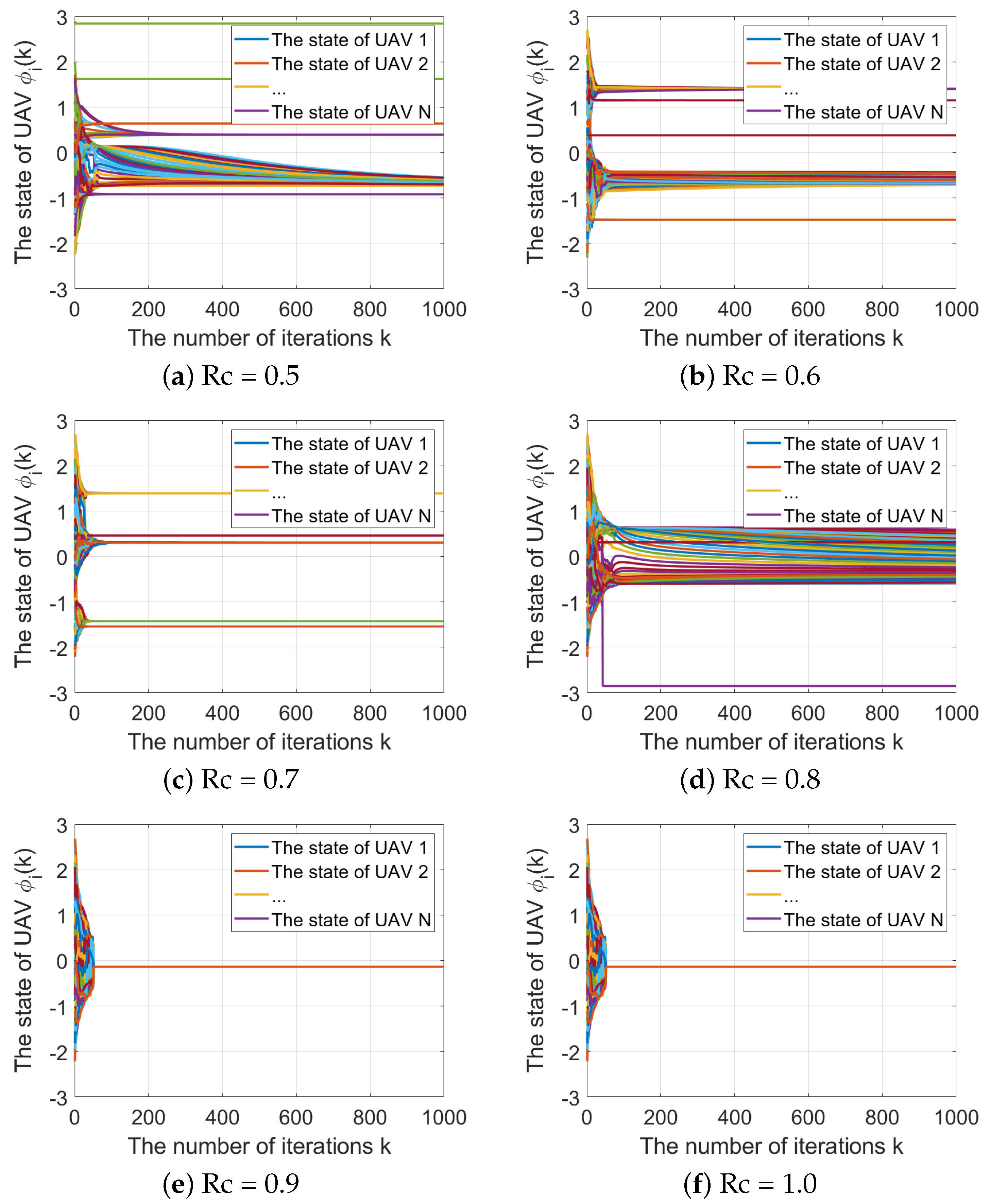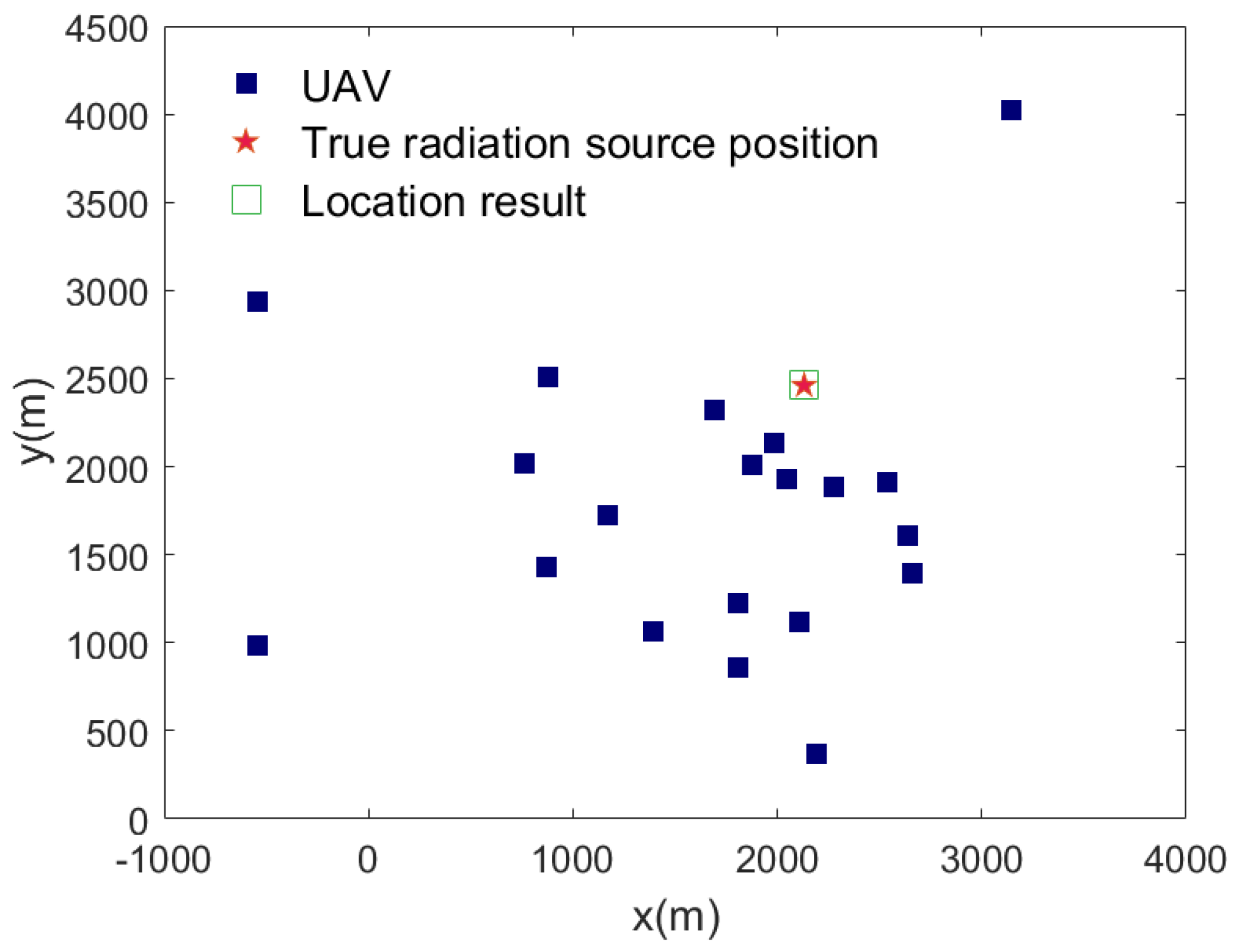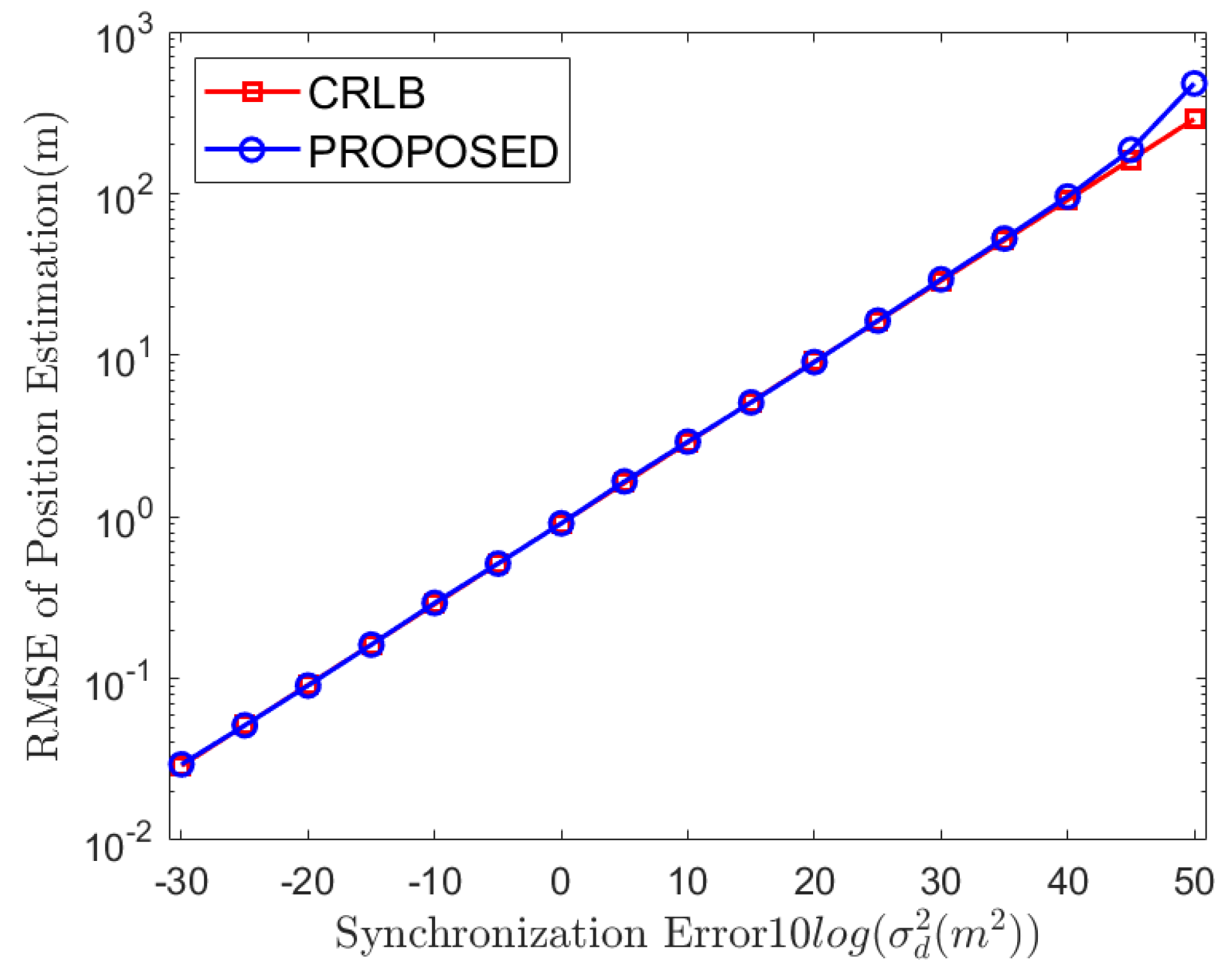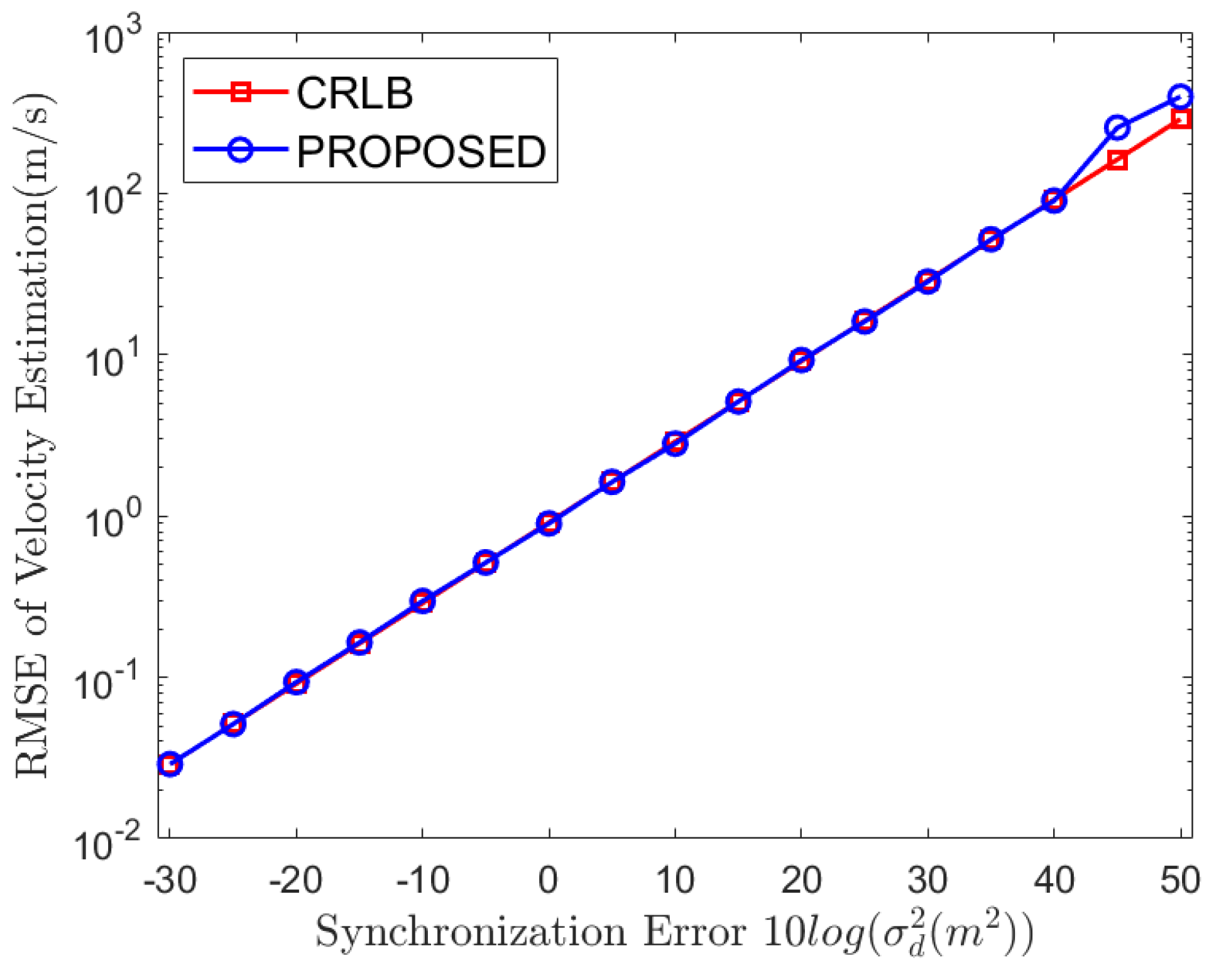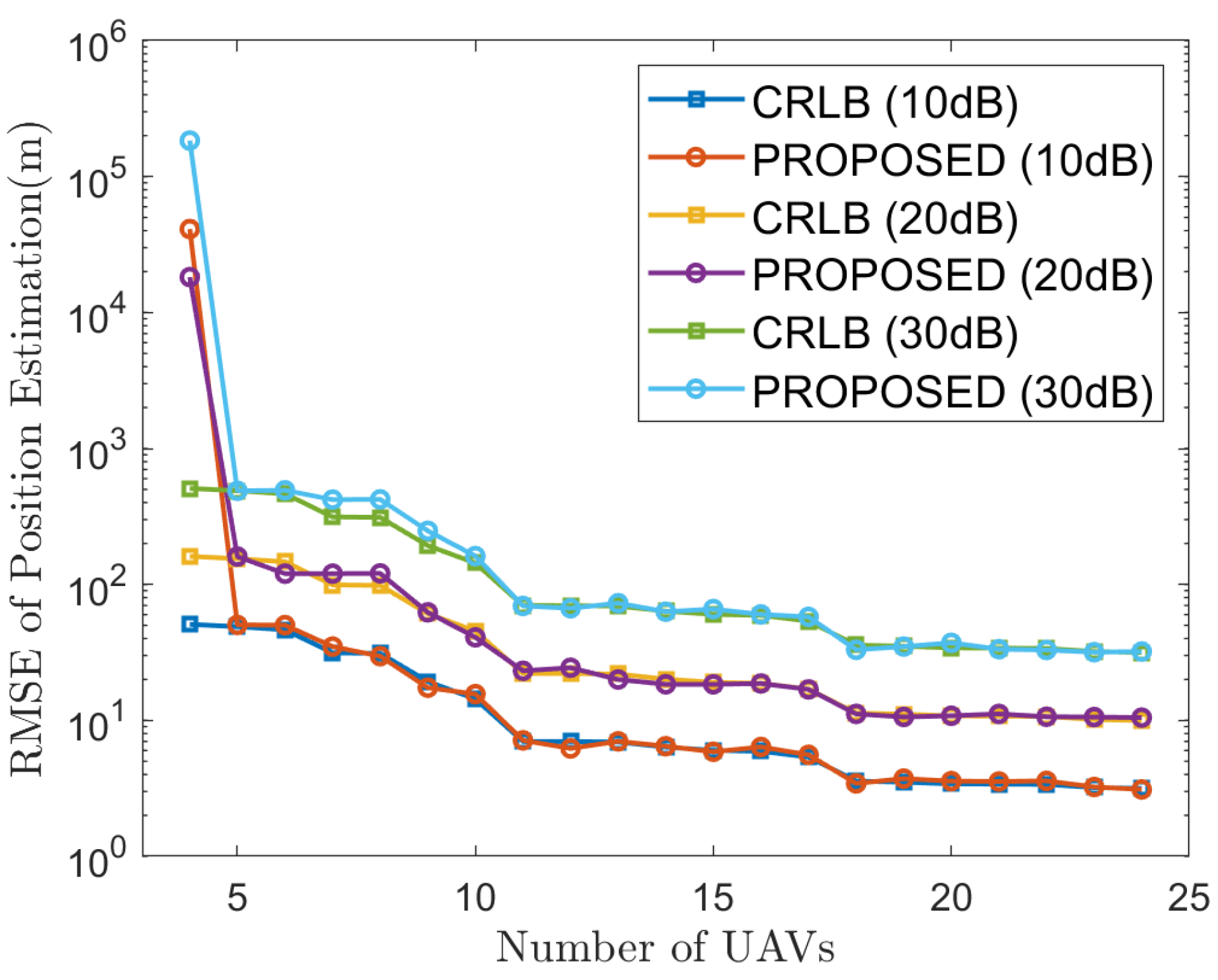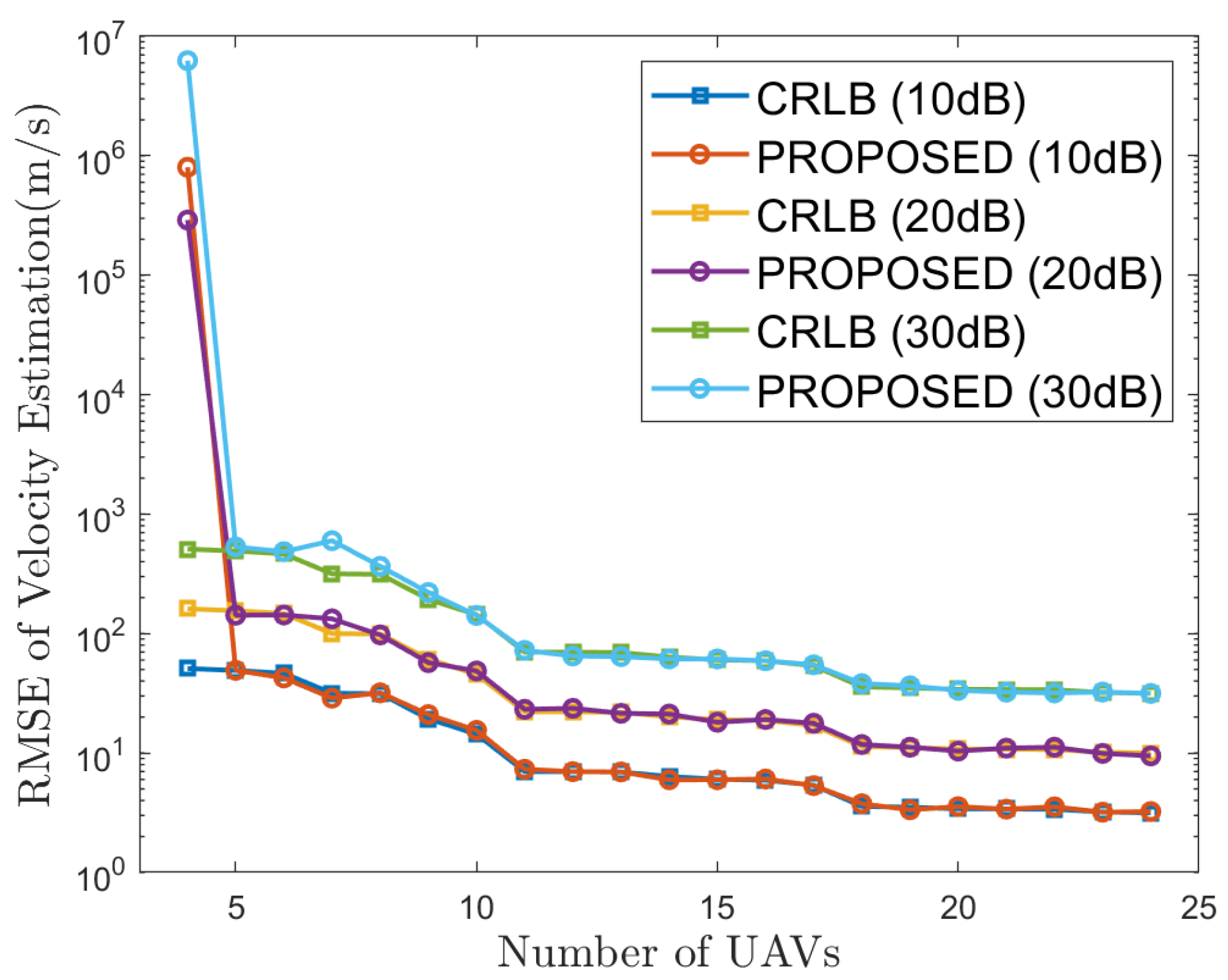1. Introduction
In recent years, unmanned aerial vehicles (UAVs) have been widely used in electronic reconnaissance due to their high mobility [
1]. As traditional radiation source localization technologies mostly rely on fixed base stations on the ground to receive signals, the geometric positions of the base stations render it impossible to complete the localization task in remote areas, with only a few base stations. Compared with large active localization systems, small and light passive localization systems are more suitable for UAV platforms [
2,
3]. UAV passive localization systems can improve positioning flexibility and solve the problem of poor positioning accuracy at long distances from the fixed base stations.
At present, the measurement information for passive localization is mainly acquired from the air domain, frequency domain, and time domain. Direction cosine intersection localization locates targets based on information in the air domain, where target localization is achieved by measuring the angle of arrival (AOA) of the received signal [
4,
5,
6,
7]. However, this method has high requirements for measuring the attitude of the moving platform. With the information in the frequency domain, the Doppler frequency difference of arrival (FDOA) related to the frequency modulation of the signal [
8,
9] is measured for target positioning. Yet, the adaptability of the signal is often poor. Compared with localization algorithms based on air and frequency domain information, time difference of arrival (TDOA) localization has better performance in stationary target localization [
10,
11,
12,
13]. When there are relative motions between the UAV and the maneuvering target, FDOA and TDOA can be combined to improve localization accuracy and estimate the target speed [
14,
15,
16,
17]. As time synchronization among UAV swarm nodes is essential for TDOA passive localization [
18,
19], various algorithms have been developed.
The existing time synchronization algorithms can be divided into centralized and distributed ones. Centralized time synchronization algorithms include the timing-sync protocol for sensor networks (TPSN) [
20], coefficient exchange synchronization protocol (CESP) [
21], and cluster-based consensus time synchronization [
22,
23,
24]. When applied to large-scale cluster networks, centralized time synchronization has the disadvantages of a large accumulation of synchronization errors, poor scalability, and poor invulnerability. The emergence of distributed time synchronization protocols has addressed some of the above problems, where each node uses the local information, synchronized with its neighbors, to reach a global consensus, and no master or global clock is assumed. Distributed time synchronization algorithms include distributed consensus time synchronization (DCTS) [
25] and average time synchronization (ATS) [
26,
27,
28], where no reference is required. With the DCTS algorithm, all network nodes agree on a virtual time through information fusion between neighboring nodes. However, DCTS relies on diffusion to deliver synchronization messages, resulting in slower convergence. The ATS method can only be realized asymptotically, and too many calculation and communication iterations are required in practice. Therefore, convergence speed and synchronization accuracy improvements are necessary. Meanwhile, most distributed clock synchronization methods utilize the global positioning system (GPS) direct timing method. An accurate time reference is obtained by the GPS receivers of the UAV swarm. Although this method has a small synchronization error and a wide coverage area, it is easy to lose the lock due to the influence of the external environment, e.g., forests, high-rise buildings. After the GPS loses lock, the synchronization error reaches the millisecond level or worse, which cannot meet the requirements of TDOA localization.
Traditional distributed communication protocols will establish a large number of communication connections during communication. Extensive studies have shown that higher numbers of communication connections of the agent are not conducive to accelerating system synchronization convergence [
29], while selecting representative neighbors for the synchronization evolution can improve the synchronization convergence speed [
30,
31]. A control protocol for selecting neighbors with minimum state differences is designed in [
32] for first-order linear multi-agent systems, based on undirected topological graphs. The auction algorithm is applied in [
33,
34] to delete the safe edge in the network according to the state information of the agent, and a simpler connected topology is used to update the state. The circumcenter algorithm, based on the proximity graph, is studied in [
35]. Delaunary graphs, Gabriel graphs, and other graph construction methods are used to select neighbors for communication and calculation. In [
36], nodes with the smallest differences from their neighbors are selected from the fixed 120-degree fan-shaped communication area centered on agent
i. The method of selecting neighbors with large differences to improve system convergence to a cluster is investigated in [
37]. Reference broadcast synchronization (RBS) is a traditional synchronization method based on the neighborhood all selection (AS) mechanism, where the state of an agent is determined by the states of all its neighbors [
38]. With non-neighboring nodes A and B sending reference messages, the receiving nodes within the communication radius can perform time synchronization. However, in a large-scale UAV swarm network, each UAV can have a large number of neighbors. Thus, AS-based synchronization increases the amount of calculations and the energy consumption of the system, and agents having more communication connections cannot accelerate system convergence.
The neighborhood selection (NS) strategy has been shown to enhance the convergence speed and stability of the system [
30]. As each UAV only requires some neighbors for updating its own state information, NS synchronization can achieve faster convergence. To facilitate convergence and improve system consistency, agents with the smallest state differences in each sector are selected to form the backbone network topology. This paper presents an NS-AS synchronization mechanism-based moving source localization method for UAV swarms. The most representative individuals are selected from each sector for state update calculation. When the UAV swarm network reaches full connectivity, the synchronization algorithm switches to the AS strategy.
Compared with the existing research, the main contributions of this study are summarized as follows:
(a) The NS-AS synchronization mechanism is introduced to improve system synchronization convergence. (b) The TDOA-FDOA joint localization algorithm is utilized to achieve passive localization of moving radiation sources. (c) The convergence performance of different synchronization algorithms and their related parameters are analyzed. (d) The effects of different passive localization parameters, e.g., the synchronization errors and the number of UAVs, on localization accuracy are analyzed.
The rest of this paper is organized as follows.
Section 2 formulates the passive localization problem of UAV swarms;
Section 3 presents the proposed algorithm;
Section 4 discusses the relevant simulation results;
Section 5 concludes the paper.
